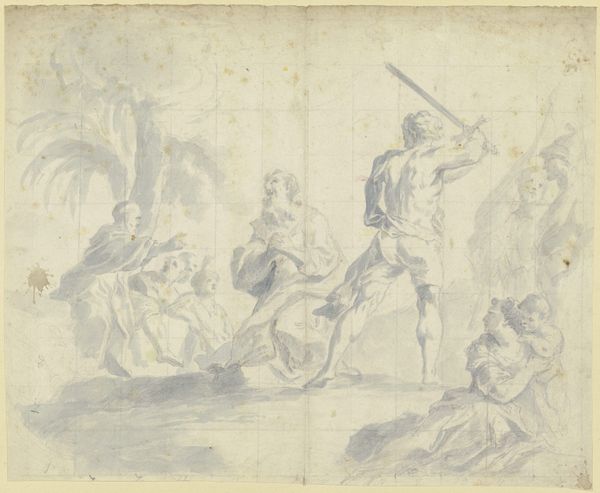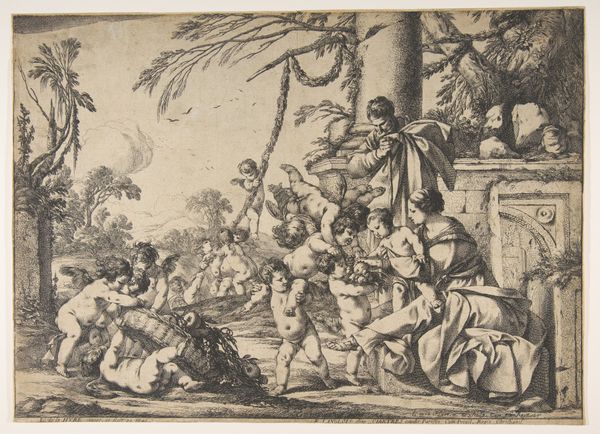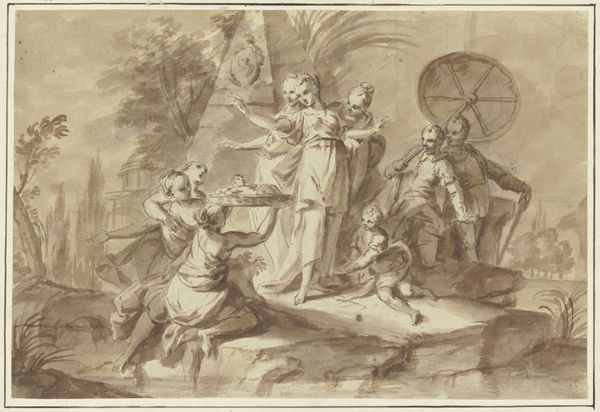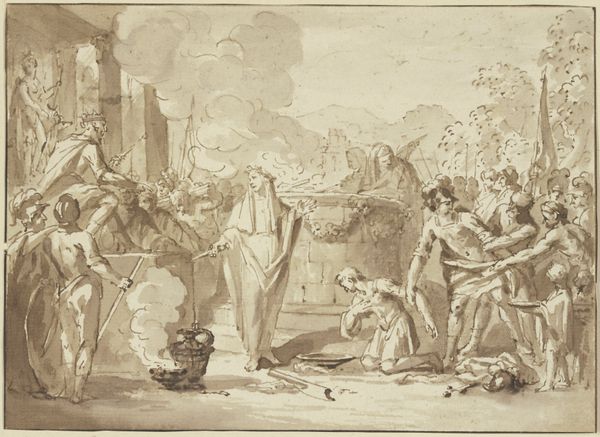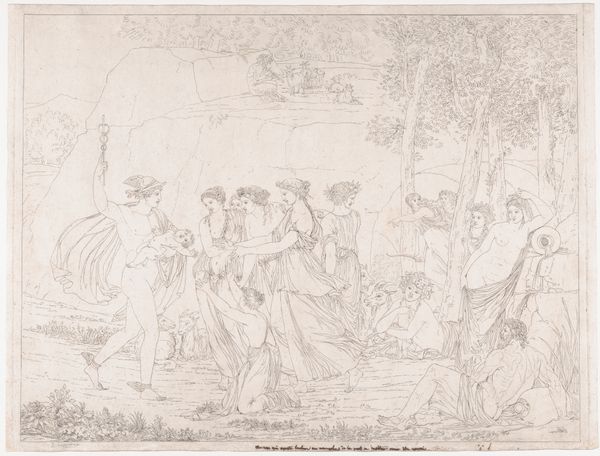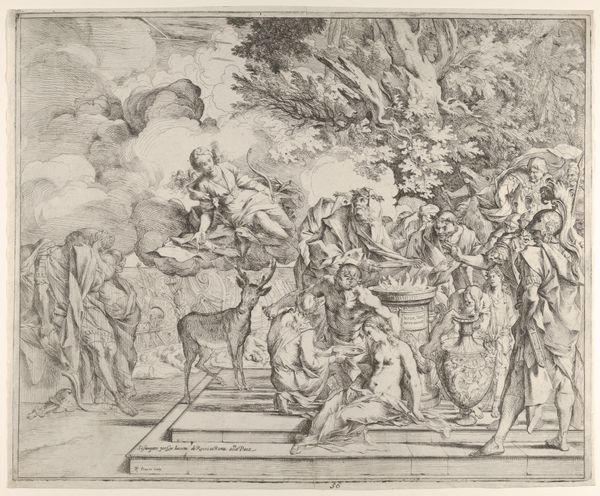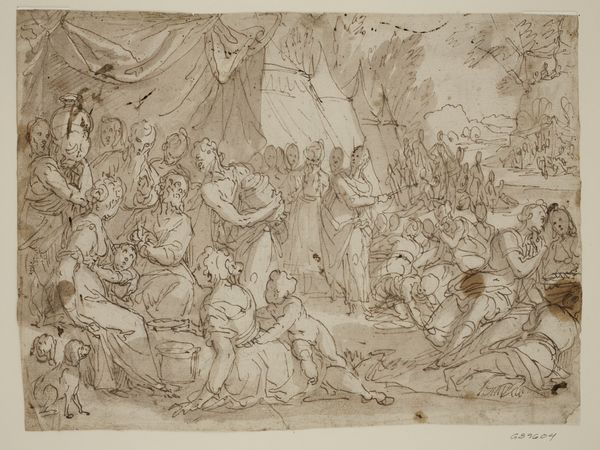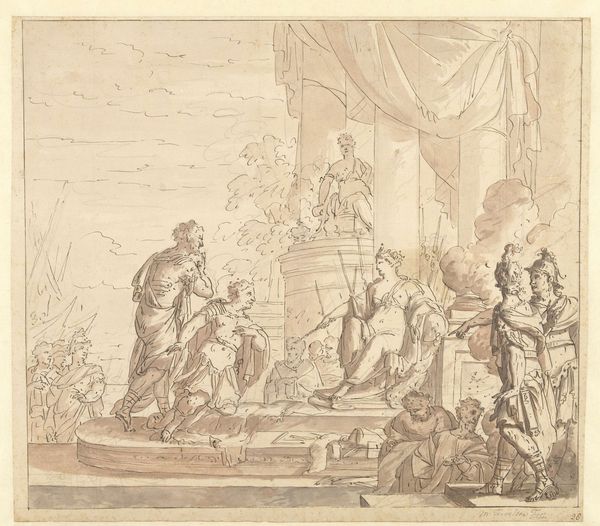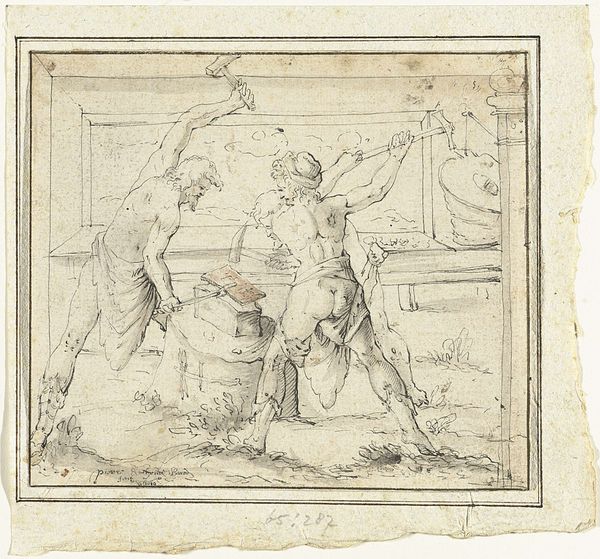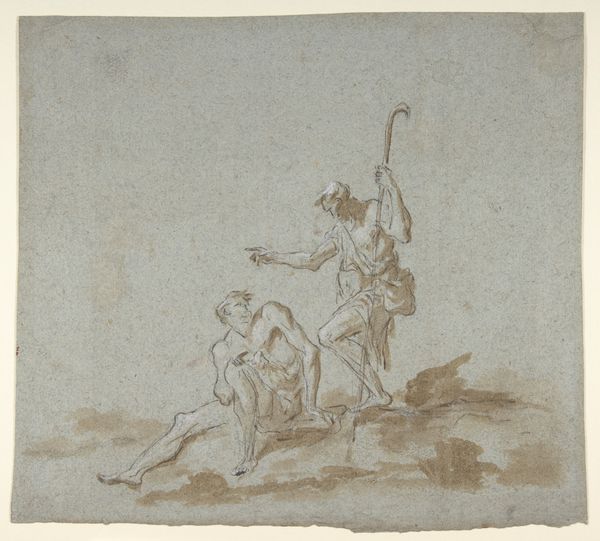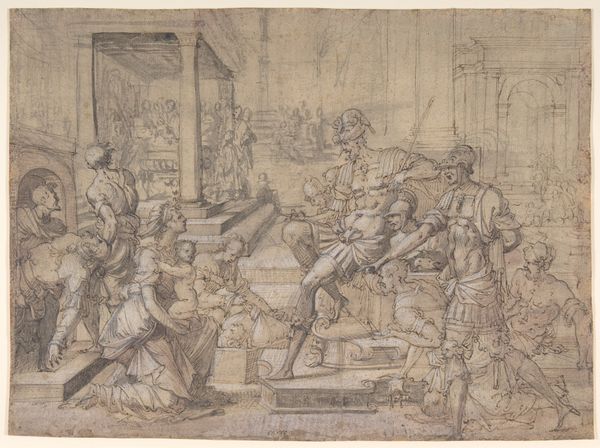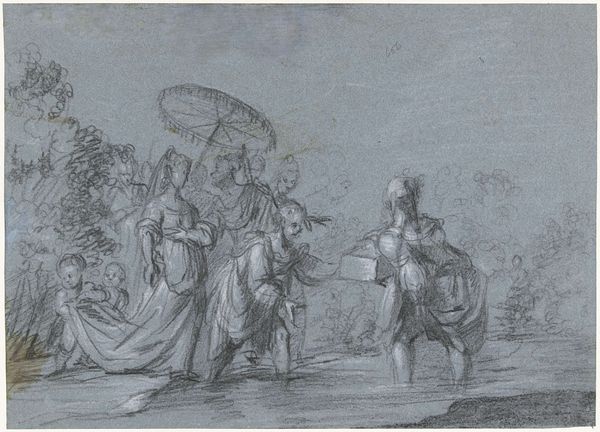
drawing, pencil
#
drawing
#
ink drawing
#
medieval
#
narrative-art
#
baroque
#
figuration
#
pencil
#
history-painting
Dimensions: 9-7/8 x 15-3/4 in. (25.1 x 40 cm)
Copyright: Public Domain
Editor: So, this is "The Sacrifice of Noah," a drawing by Aureliano Milani, from the 17th century. I find the scene very… theatrical, almost like a stage production, with the figures gesturing dramatically around the altar. What catches your eye when you look at it? Curator: The symbols woven throughout the piece speak volumes, don't they? The offering on the altar, the posture of the figures - each element reinforces this pivotal moment of gratitude and renewed covenant. Notice the faces—are they gratitude or terror? Are the raised hands an offering or are they beseeching? Editor: That’s interesting. I hadn't considered terror, mostly relief. But now that you mention it, their expressions do seem a bit ambiguous. What do you make of the landscape, or the lack thereof? Curator: The sparse background invites us to focus on the human drama, but even the tree on the right speaks to renewal. Think about it: after the flood, new life sprouts forth. The burnt offering represents the old, sacrificed for the sake of a fresh start. Note too the almost architectural altar, it's more than a rough construction; it represents the solid foundation of faith and commitment. Does the linear focus indicate to you what Baroque masters where thinking about sacred spaces? Editor: Yes! I hadn't considered the solidity of the altar in contrast to the… sketchiness of everything else. It does feel intentional now that you mention it, like it's grounding the entire scene. Curator: It's precisely that tension – the solid and the ethereal, fear and thankfulness – that gives the piece its enduring resonance. And perhaps reflects a universal unease around covenantal promises. It invites us to contemplate our own relationship with sacrifice and devotion. Editor: Wow, I’ll definitely be spending more time with this drawing! I never realized how much symbolism was packed into it. Curator: It’s a powerful example of how images can distill complex human experiences into accessible forms, bridging cultural memory across centuries. Every line carries weight; it makes you wonder, doesn’t it?
Comments
No comments
Be the first to comment and join the conversation on the ultimate creative platform.
